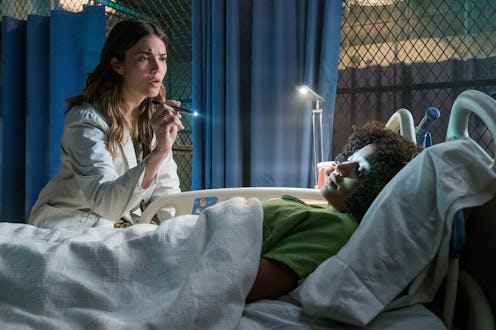Entertainment
The New YA Thriller Movie 'The Darkest Minds' Will Leave You With Nightmares
In the near-future of dystopian YA novel The Darkest Minds, an unknown pandemic eventually called IAAN devastates humanity, killing 98 percent of the world's children. The 2 percent that survive don't come out unscathed — they've acquired a terrifying array of psychokinetic powers they can't control. Feared by their parents and seen as a threat by the government, the children are shunted to interment camps where they're tested on and tortured. The Darkest Minds is getting a big-screen adaptation and as in the novel, the disease is just the horrifying spark lighting up humanity's baser instincts. But is IAAN from The Darkest Minds real, or based on something that could actually happen in the real world?
Although IAAN is not an actual disease, it sounds scarily real. IAAN is short for Idiopathic Adolescent Acute Neurodegeneration, and though couched in medical lingo, the breakdown accurately describes what the disease does to children in The Darkest Minds. Idiopathic means any disease arising spontaneously, or with causes unknown. Acute means the onset is severe and sudden. Neurodegeneration is the loss of function (or just loss of) neurons, the specialized brain cells that transmit information. In The Darkest Minds, the only symptom of IAAN is sudden death without warning, or onset of powers, at the age of 10.
The closest real-life analog to IAAN is the similar-sounding SIDS, or Sudden Infant Death Syndrome. Its exact cause is unknown, and diagnosis actually requires that the death remain unexplained by other causes. Like IAAN, the disease is sudden, symptomless, and devastating. The main differences are that SIDS only applies to children less than one year old, and there are no survivors.
In The Darkest Minds, the few survivors of IAAN face the awful reality of betrayal by their own parents and family, who turn them over to the government to handle. In a frightening parallel of current events, the children are isolated and kept in terrible, legal conditions condoned by the government. Ruby, Darkest Minds' protagonist, is sent to Camp Thurmond, where she's identified as one of the most powerful children they've seen. She eventually escapes, but in a world where her own parents willingly gave her up and her government abused her, there's few people to turn to or trust.
Pandemics feature heavily in modern media, whether taking the form of infected zombie hoards inWorld War Z or The Walking Dead, or the deadly outbreaks of Contagion, Quarantine, or Last Man On Earth. While they reflect a number of modern fears, including paranoia about societal breakdown (also seen in the surge of "prepper" culture) and future uncertainty, they're also imagining a very possible scenario. Humanity's suffered a number of actual pandemics, the most famous being the Bubonic Plagues that came in devastating waves throughout the Middle Ages. More recently we've dealt with outbreaks of horrific and highly contagious viral diseases like Ebola, Zika, and various forms of the flu.
While so far, world governments have been able to rally and organize to contain potential outbreaks, scientists and doctors agree it's only a matter of time before the next big one. With antibiotic immunity already surfacing in the form of untreatable strains of STDs, ease of world travel, and crowded farming and living practices, the next pandemic is likely already brewing. Zika's affecting the development of unborn children is currently the closest we've seen to IAAN, though the likelihood of anyone attacked by any disease developing psychic powers is slim.
But even in a world made cruel by fear, Ruby and the other children of The Darkest Minds manage to survive; let's hope if humanity actually has to face the worst, we can do the same.
